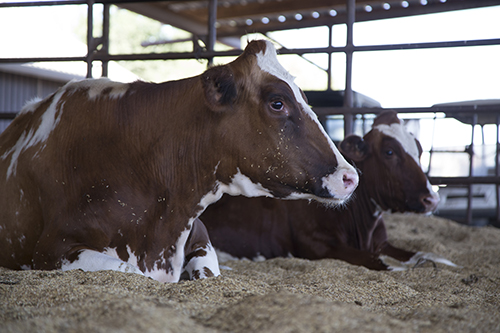
"Whenever you lose interest in being better at something, chances are you have already stopped being good at it," challenged milk quality specialist Andrew Johnson, D.V.M., at the recent National Mastitis Council's regional meeting in Appleton, Wis.
When it comes to managing milk quality and somatic cell count (SCC), Johnson would argue that the "better" must shine through every part of the operation, not just the milking parlor.
He explained farms must continually improve in all three areas that influence milk quality: the cow, the machine, and the people. During his presentation, Johnson particularly focused on cow comfort and the people.
When discussing cow comfort, he emphasized the importance of reducing standing time in the holding pen; improving flooring in parlors, alleyways, and at the feedbunk; and grooming stalls every time cows are brought to the barn. He said rubber flooring is one of the most beneficial cow comfort features he sees in barns.
Johnson especially emphasized the people and the environmental factors of milk quality. He suggested that when it comes to training people, stockmanship is key. The way cows are brought to the barn and are treated in the holding pen play a definitive role in how they perform in the milking parlor.
He suggested farms should be training not only their parlor help but also their pushers. These employees should be taught to walk the cows up slowly, and while in the freestall, focus on grooming stalls instead of pushing cows.
"Cows are habitual," he said. "We should train them to walk in the parlor on their own."
In addition to these important considerations, Johnson shared a few golden nuggets that he thinks are sometimes overlooked by farms.
"If a cow ever walks through an alley with manure, she is at a higher risk for mastitis," he explained. "We have to remember that in the freestall, the cow lies on that foot that walked through the manure."
In a broader context, Johnson reminded the group that part of milk quality is providing adequate feed and water at all times. Anything that stresses the cow impacts milk quality.
(c) Hoard's Dairyman Intel 2016
July 18, 2016








